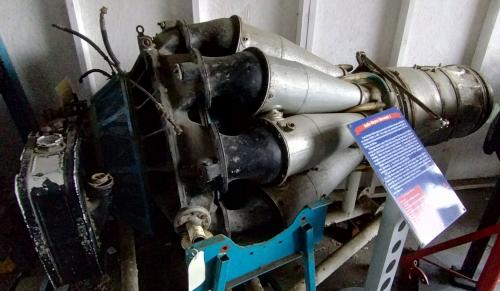Frank Whittle’s W2B engine powered the first British jet-powered flight of the Gloster E28/39 in 1941. This engine was subsequently developed by Rolls-Royce into the Derwent and was the first jet engine to power a front line fighter, the Meteor.
Drawings started in April 1943 and it passed its 100-hour test at 2,000 lb rating in November 1943. In April 1944 it went through flight tests in a Meteor rated at 1,800 lb thrust and with a weight of 920 lb. The Derwent II, III and IV followed. When the Derwent V was developed, it incorporated so many changes in design that it was virtually a new engine. It provided the increase in power needed to power the larger and heavier Meteor night fighter aircraft.
The Mk.II was also modified with an extra turbine stage driving a gearbox and, eventually, a five-bladed propeller, forming the first production turboprop engine, the Rolls-Royce Trent (RB.50).
The basic Derwent design was also used to produce a larger 5,000 lb (22.2 kN) thrust engine known as the Rolls-Royce Nene, used in British fighters and licence-built in the USA. The Derwent 5 engine was used to power the Avro Jetliner – the world’s first regional jet passenger plane. It was designed and built at Avro Canada in Malton, Ontario.
Technical Details: (Derwent I)
